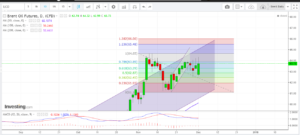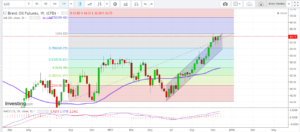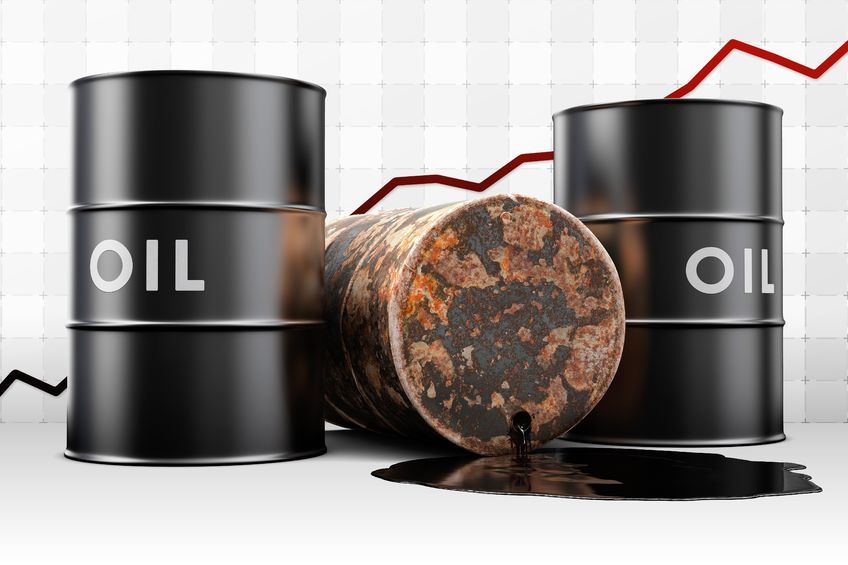Crude Oil
Crude prices continued their strong bullish run with Brent Feb future settling $ 1.10 cents higher at $ 63.73 / bbl. WTI settled at $58.36 /bbl., gaining 96 cents on the day.
Oil finished higher on Friday, with prices climbing back toward their best level since July 2015 after OPEC and other crude producers agreed to extend existing output cuts until the end of 2018 to tighten global supplies.
At one point in time the Brent future had touched a peak of $ 64.32 /bbl. But prices came off session highs as financial markets reeled from an ABC News report that added to concerns about President Donald Trump’s exposure to a probe into Russian meddling in last year’s campaign.
For the week, the Brent future gained about 0.4% while WTI lost 1%. The two crudes gained 3.5% and 5.5% respectively in November.
Managed money extended their length in WTI futures and options by 52,000 lots last week prior to OPEC’s regular meeting, pushing their net positions in the US benchmark to a total of 396,000 lots, just shy of the record high 413,000 lots seen in February. Total long positions increased by 27,000 lots while total short positions were trimmed by 26,000 lots.


The daily chart, as predicted, broke out of the sharply rising channel. However the last two days of the week have shown sharp gains. The last candle is a candle with a big body and long tails as well reflecting a determined bid by bulls to push up the market and succeeding to some extent.
Having said the above, bearish divergences are appearing with the MACD failing to cross over and widening slightly. Further the absolute vale of the basic line has also come down, an indication that the market may turn from here. The weekly chart shows a spinning top candle, a sign of uncertainty in the market with a sign of the MACD on a possible turn around.
Our advice would be to stay long but with a tight stop loss.
Naphtha
After recently being valued at historical highs, naphtha cracks are beginning to come under pressure as additional supplies to counter the strong demand are seen entering into the market.
The December crack for now is unchanged at $ 3.80 /bbl.
Gasoline
Gasoline cracks have fallen notwithstanding a drawdown in inventories held independently at the Amsterdam-Rotterdam-Antwerp (ARA) storage and refining hub. Stocks last week fell to a four-week low of 882,000 MT in the week to November 30.
The December 92 Ron paper crack, nevertheless, is valued lower at $ 11.80 /bbl.
Distillates
The Asian Distillate markets remain stable amid balanced demand supply fundamentals. To that end, fresh spot demand from the Philippines was countered by continued supply from India.
The December 0.05% Gasoil crack has improved and is valued today at $13.10 /bbl. The regrade has fallen to $ 0.80 /bbl.
Fuel Oil
Fuel Oil cracks have slid further as inventories across key trading hubs remain high. In the week to November 30, Fuel oil stocks in the ARA hub fell for a third week straight, down 9% from the previous week. However, compared to the same time last year, inventories are 47 % higher, and are above the five-year average of 818,000 MT for this time of the year.
The crack is valued lower at – $ 3.25 for December. The visco spread has risen to $ 0.70 /bbl.
About this blog
This blog post attempts to give a top level summary of the Singapore market goings on to a person who seeks to obtain a directional sense of the market on a daily basis.
Disclaimer : All the views are the author’s personal views. These do not constitute an advice to buy or sell any commodity
